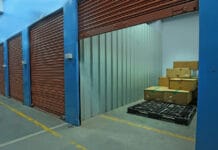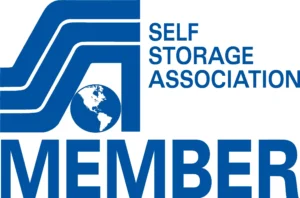Decluttering and organizing your home can transform your living space, making it more functional and inviting. This step-by-step guide simplifies the process, making tackling one room at a time effortless. Begin with sorting items into categories like keep, donate, and discard. Use box storage for items you want to keep but don’t need immediately. Incorporate utility storage for tools and cleaning supplies, maximizing space with shelves and cabinets.
For clothing, consider vertical solutions like additional rods or hanging organizers. During renovations, plan for built-in storage options such as custom shelves or hidden compartments to blend with your design seamlessly. Organize your garage with wall-mounted racks or overhead systems to optimize car storage and create additional space. Regularly review and declutter, maintaining the habit of returning items to their designated places.
These practical strategies will help you create a tidy, clutter-free environment that enhances your daily life.
Organization and Decluttering – An Overview
Organization and decluttering are crucial for maintaining a functional living or working space. You create a more efficient and stress-free environment by systematically arranging belongings and removing unnecessary items. This process saves time spent searching for things and enhances productivity and mental well-being. Decluttering helps to eliminate distractions, making it easier to focus on tasks. Additionally, an organized space can improve safety by reducing hazards and making your home or office more aesthetically pleasing. Organization and decluttering foster a sense of control and peace, contributing to a more balanced and enjoyable life.
Section 1: Recognizing the Need for Decluttering
Most of us, at some point, realize that we’ve accumulated more stuff than we can comfortably fit in our living spaces. This clutter not only makes your space look disorganized but also contributes to a sense of chaos that can impact mental well-being. The first step in your decluttering journey is recognizing this need and committing to making a change.
Tips to Recognize Clutter
Look around your living space and identify consistently disorganized areas, spaces that feel cramped, or rooms that are difficult to navigate. These are telltale signs that it might be time to declutter.
Section 2: Starting the Decluttering Process
Embarking on the decluttering process can feel overwhelming, especially when you don’t know where to start. The key is to break down the task into manageable chunks.
Decluttering Step-by-Step
Start with one room at a time, and focus on one area within that room. Sort your items into three categories: keep, discard, and store. The items you use frequently should be kept close, items you no longer need can be discarded, and items you use occasionally can be stored.
Section 3: A Guide to Self Storage – Choosing the Right Unit
Once you’ve sorted your items, you’ll clearly know what you need to store. This is where your guide to self-storage comes into play. Picking the right storage unit can seem daunting, but it’s simpler.
With “Self Storage 101” as your trusty guide, choosing the perfect storage unit becomes a straightforward task after sorting through your items and knowing exactly what you need to store.
What to Look for in a Self Storage Unit
When choosing a storage unit, consider size, location, cost, and security factors. You want a unit that’s the right size for your items, conveniently located, reasonably priced, and secure to ensure your items are safe.
Section 4: How to Pack for Self-Storage
Packing items for storage is different from packing for a move. You need to ensure that items are safe and secure and easy to access if needed.
Effective Packing Techniques
To protect your items, use high-quality boxes and packing materials. Label each box clearly and create an inventory list. Remember, heavy items go in small boxes and light in larger ones. This approach keeps your belongings safe and makes the moving process easier.
Section 5: Organizing Your Storage Unit
A well-organized storage unit will save you time and frustration when retrieving items—place items you may need to access more frequently towards the front of the unit. Also, leave a narrow aisle for easy access to the back.
Utilizing Space Efficiently for Organization and Decluttering
To maximize space, dismantle furniture where possible and stack boxes based on weight—not size—with heavier boxes at the bottom. Use vertical space, but be mindful of safety.
Section 6: Maintaining Your Storage Unit
Renting a self-storage unit is an ongoing commitment. Regular maintenance ensures your items stay in good condition and your storage unit remains easy to navigate.
Regular Checks and Cleanliness
Check your storage unit periodically for any signs of damage or pests. Also, ensure that the storage facility maintains cleanliness.
Final Words for Organization and Decluttering
Systematically arranging your belongings and eliminating unnecessary items reduce clutter and create a sense of order. This process helps save time, enhances productivity, and promotes mental well-being by reducing stress and distractions. An organized space also improves safety, making it easier to navigate and reducing the risk of accidents. Furthermore, it enhances the aesthetics of your surroundings, making your home or office more inviting and pleasant. Overall, the benefits of organization and decluttering are far-reaching, contributing to a more balanced, productive, and satisfying life.
FAQs for Organization and Decluttering
A1: Begin by choosing one small area to declutter, like a drawer or shelf. This makes the task less overwhelming.
A2: Ask yourself if you’ve used the item in the past year. If not, it might be time to let it go.
A3: Use vertical space with shelves, hanging organizers, and under-bed storage boxes to maximize space.
A4: It’s helpful to declutter at least once a year. Regular mini-decluttering sessions every few months can also keep things organized.
A5: Store these items in labelled boxes or utility storage units in a closet, attic, or basement.
A6: For documents, use desk organizers, file cabinets, and labelled folders. Keep only essential items on your desk.
A7: Decluttering reduces stress, creates a more organized space, and makes it easier to find things when needed.
A8: Regularly clean and organize your space, and habitually put items back in their designated places.
A9: Keep a few meaningful items and consider taking photos of the rest. This way, you preserve the memories without keeping all the physical items.
A10: Involve them in the process by setting clear goals and making it a fun activity. Reward everyone with a treat or family outing once the task is complete.







